Sustainable Development Goal 2 (SDG 2) seeks to “end hunger, achieve food security and improved nutrition and promote sustainable agriculture”, ensuring universal access to safe, nutritious and sufficient food for everyone at all times. Likewise, it provides a much more comprehensive approach to the issue of hunger; underlining climate change, conflict and political instability, volatile food and energy prices among the key factors hindering progress.1
While hunger has been on the international development agenda and has seen substantial improvements in recent years, work still needs to be done. The 2015 Agenda and its Millennium Development Goals (MDGs) brought significant advances in hunger and malnutrition but did not meet the objective of reducing the proportion of undernourished people to under 12%.2 Today, there are still 815 million people around the world suffering from hunger.3 Consequently, the international community brings the issue to the forefront of the 2030 Agenda and urges countries to galvanize further action.
The Goal contains the following eight interrelated targets4:
 | 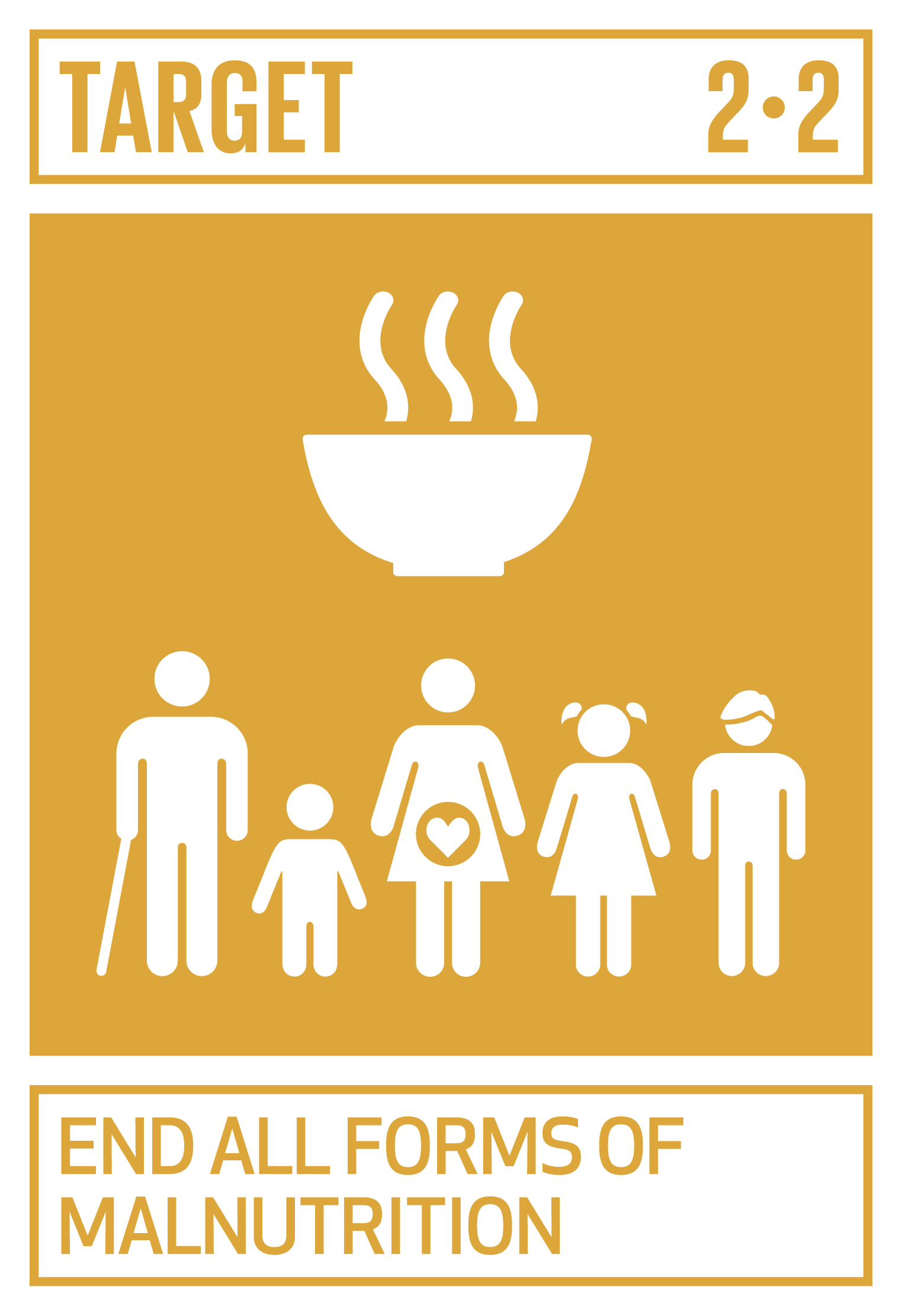 | 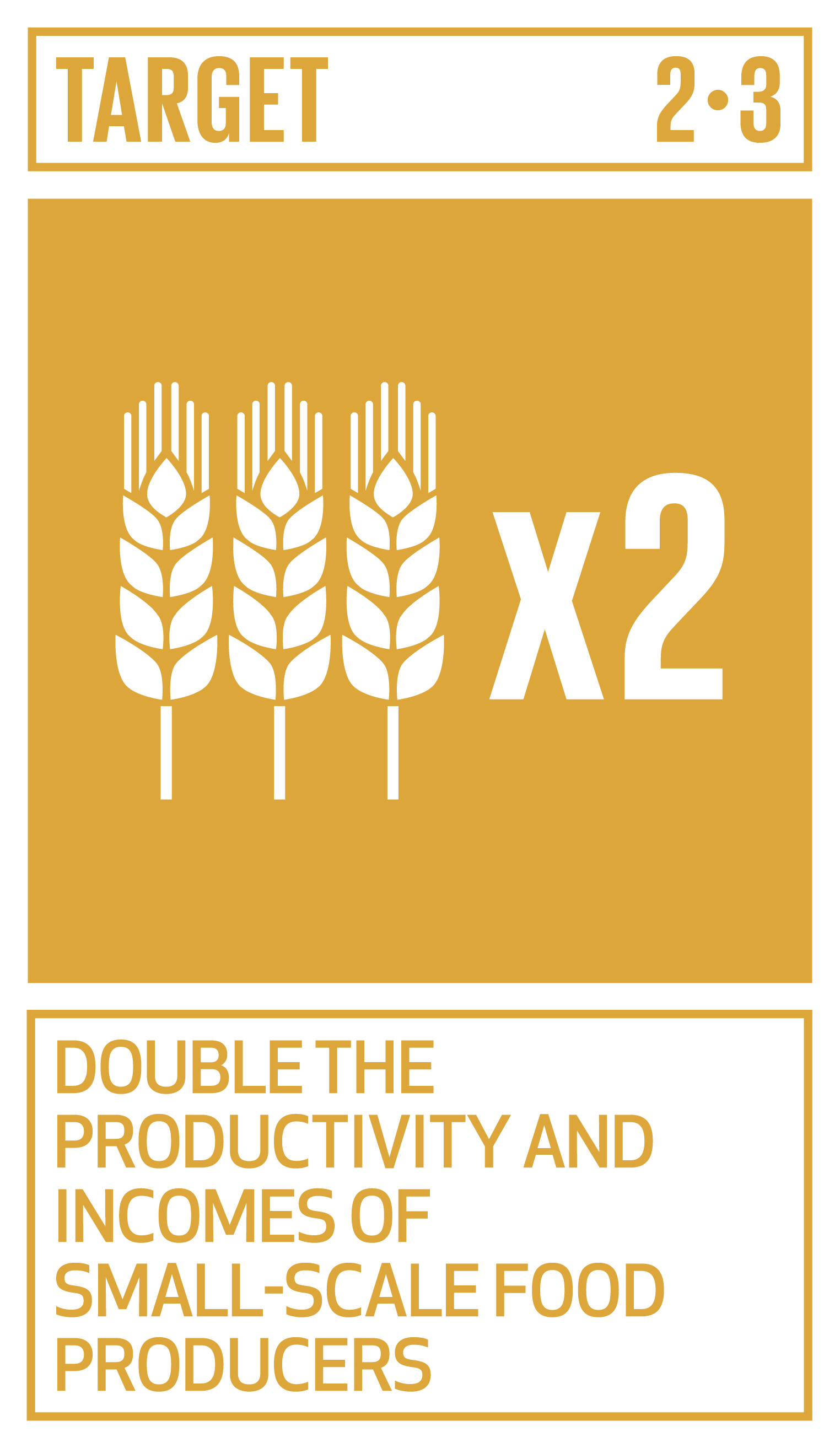 | 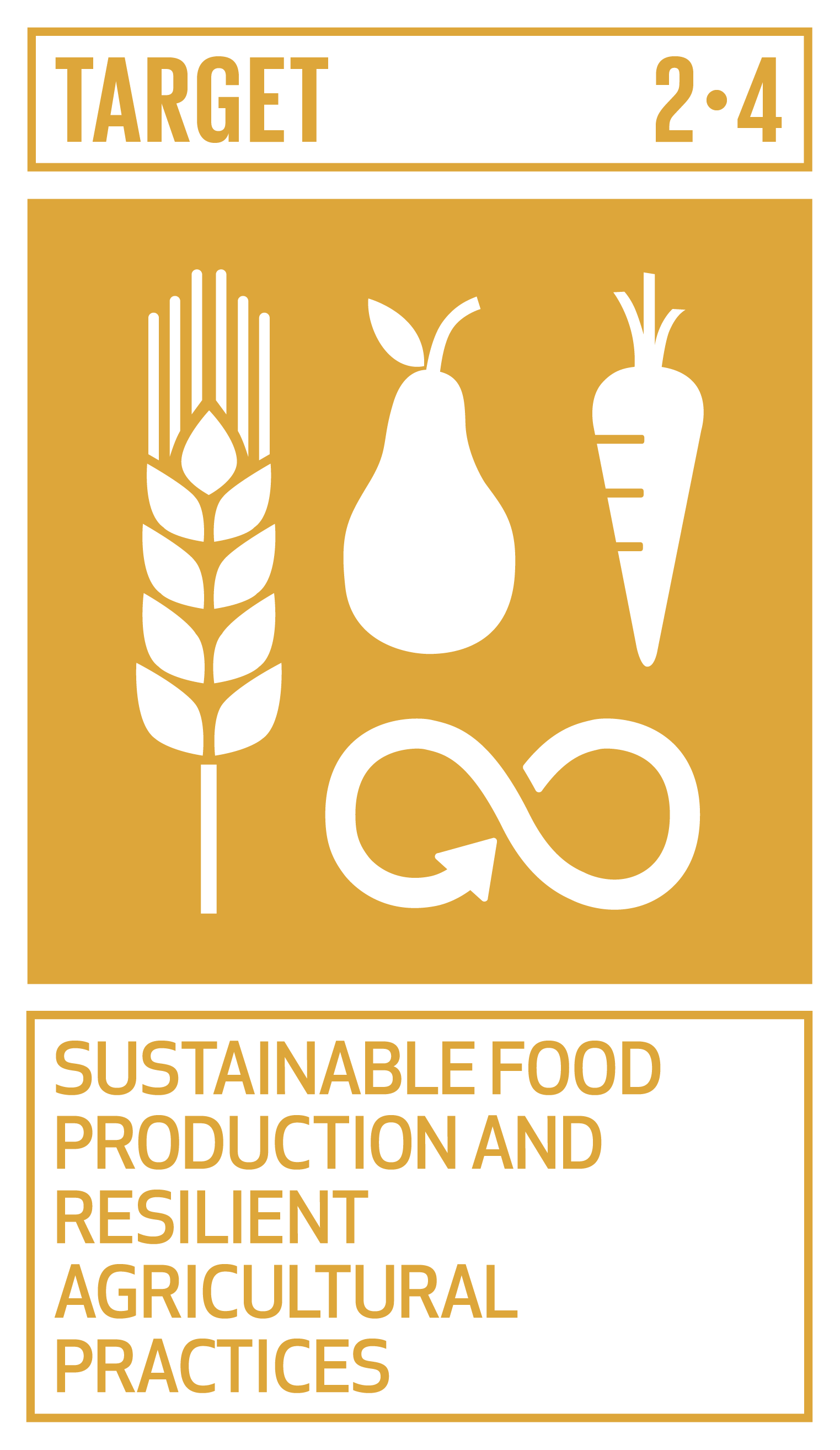 |
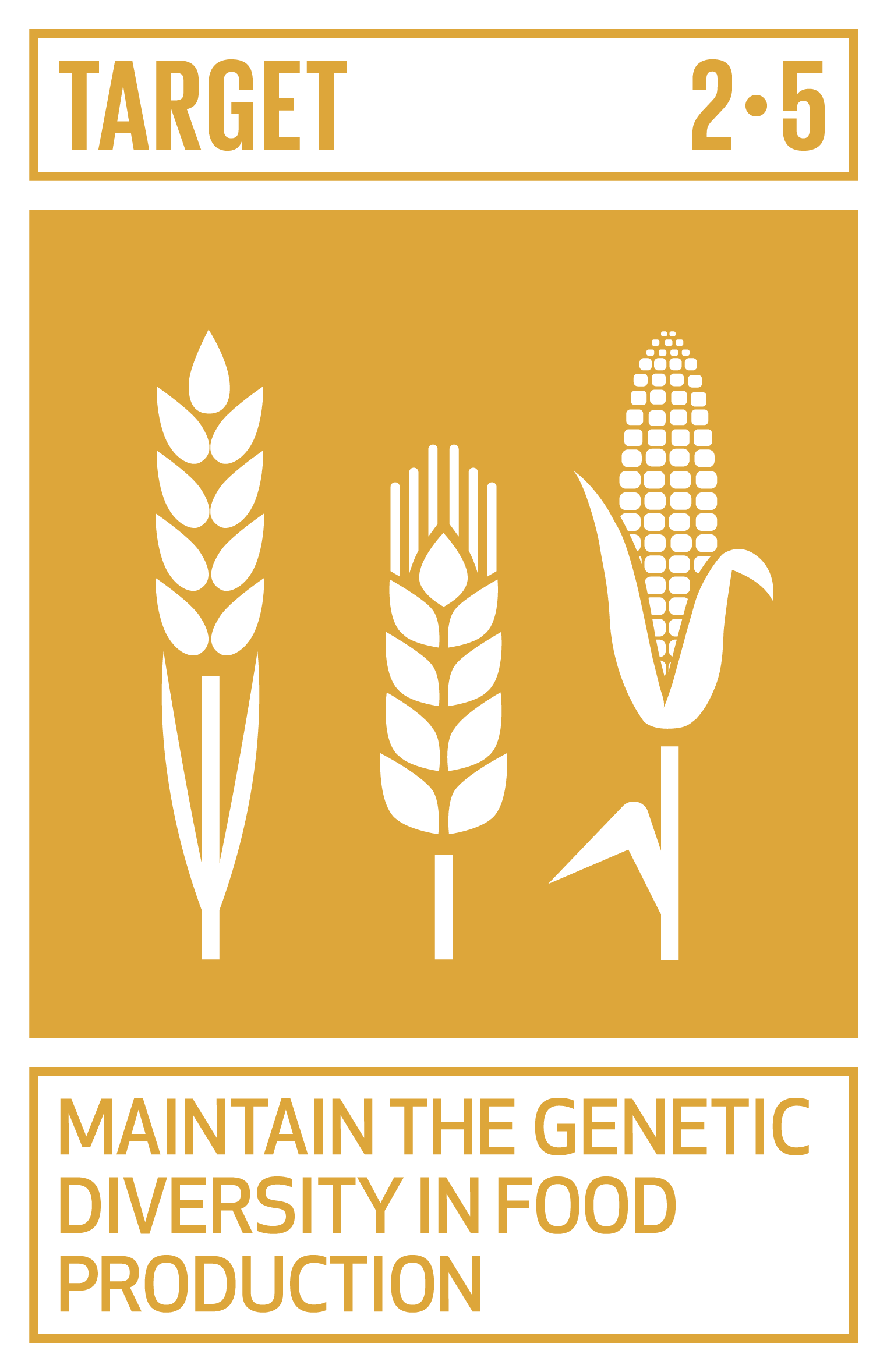 | 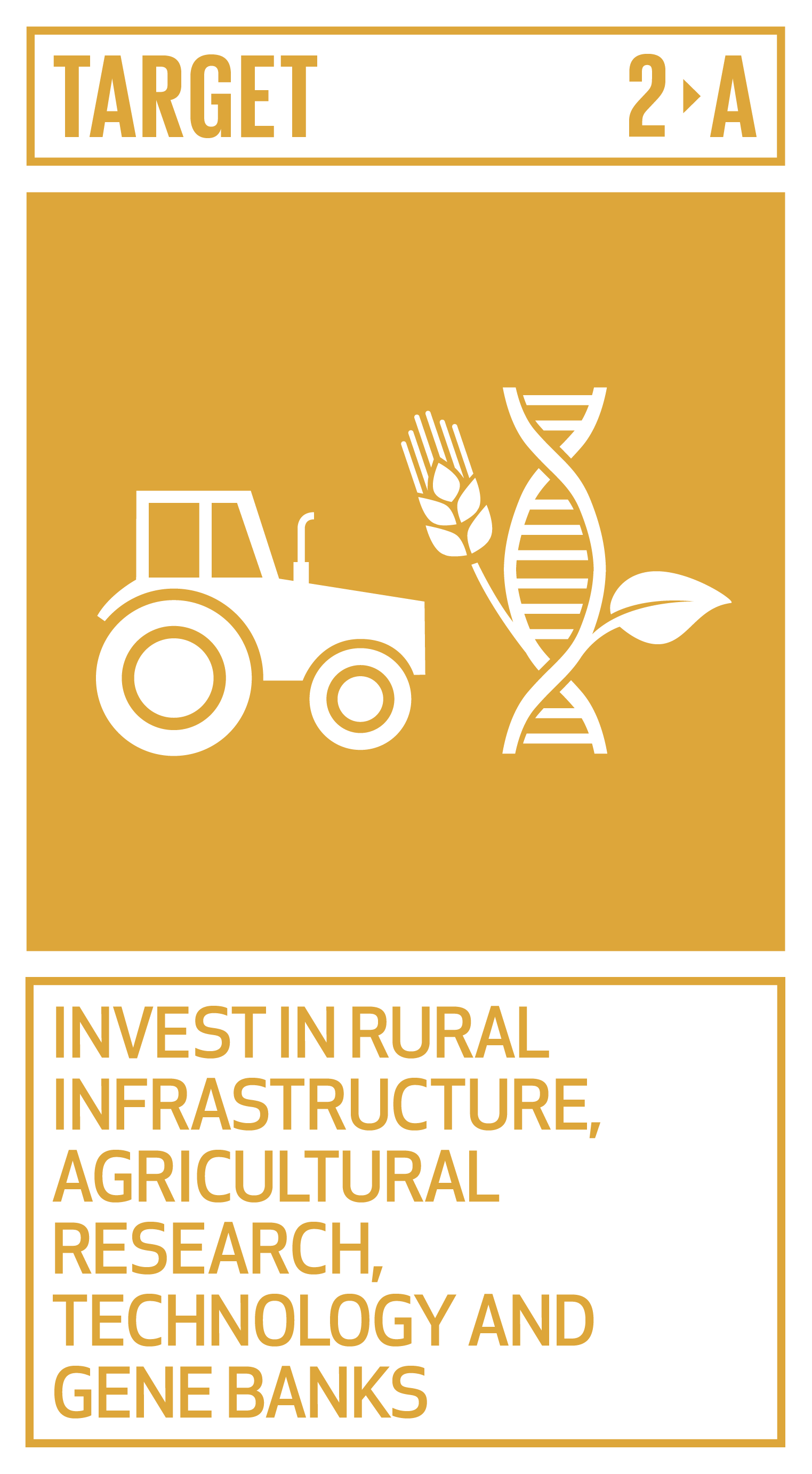 | 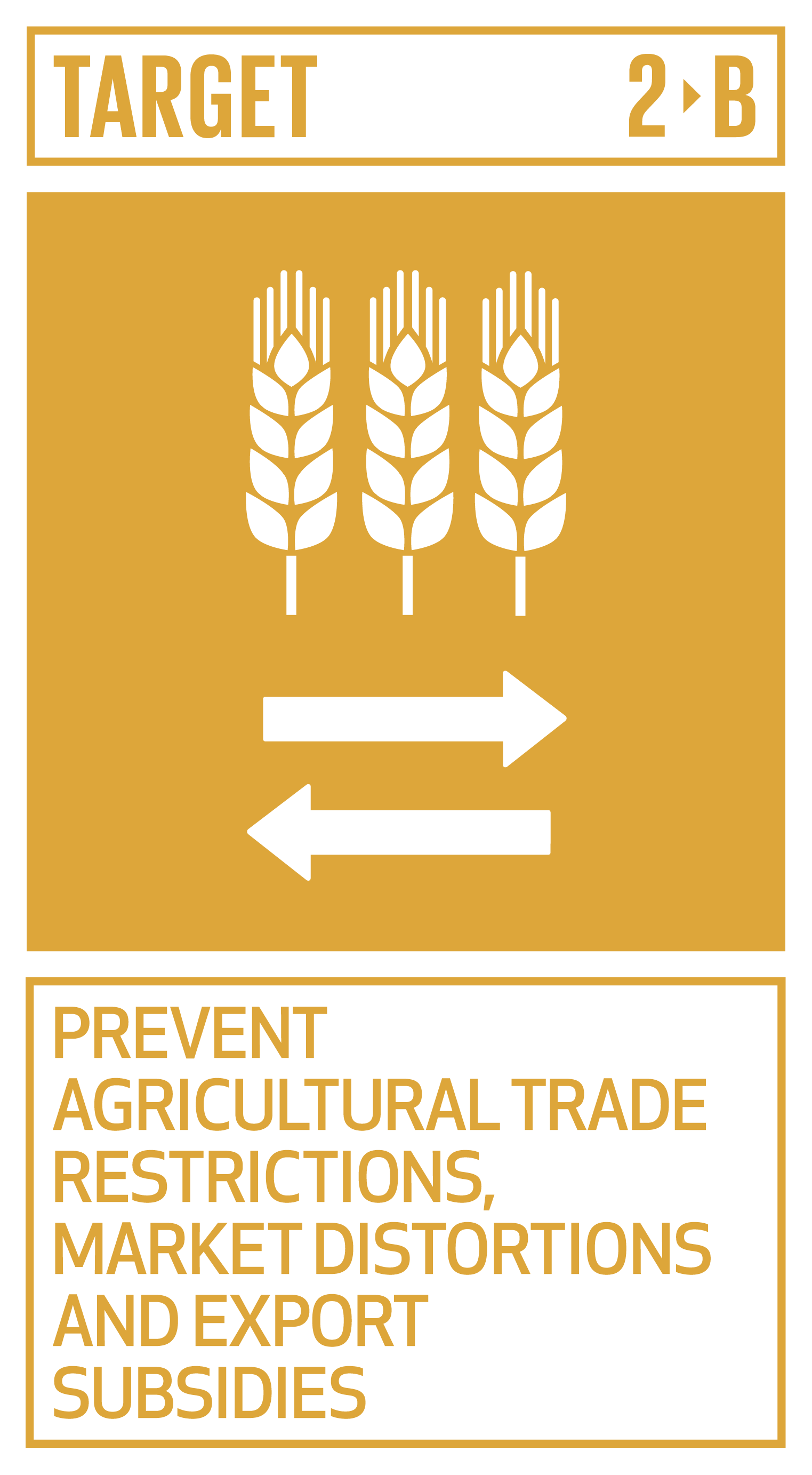 |  |
Transition from the MDG targets to SDG 2 in Cambodia
Hunger was addressed in Millennium Development Goal 1 (MDG 1), in which hunger was largely associated with poverty. Out of the three targets of MDG 1, only the third focused on hunger specifically: A) To halve the proportion of people whose daily income is less than $1.25; B) To achieve full and productive employment, as well as decent work for all, including young people and women; C) Halve, between 1990 and 2015, the proportion of people who suffer from hunger.5
The localized Cambodian MDG 1 (CMDG 1) contained two targets addressing hunger:
- Target B: reduce the proportion of people living in hunger to less than 10% of the population.
- Target D: Improve nutrition and end stunting, with especial focus on women and children.
Progress was uneven among countries, regions and population groups. The results were similar at the country-level for Cambodia. A review of the CMDGs reflected highly uneven improvements at sub-national level and across population groups. While target B was fully met, target D showed significant underperformance.6
The transition from the MDGs to the SDGs reflects two major shifts of approach. First, the new 2030 Agenda makes a clear distinction between poverty and hunger by creating a standalone goal for the latter. Second, a much more comprehensive approach is adopted. SDG 2 underlines a number of other factors also hindering progress – such as financial and economic crises, wars and climate change – which trigger unstable scenarios, damage harvests and bring sudden price increases of food and commodities, among others. SDG 2 calls for a change of the global food and agriculture system in order to provide nutritious food for all and generate decent incomes. This involves promoting sustainable food production systems through resilient agricultural practices; supporting equal access to land; and empowering small scale farmers in order to enhance agricultural productivity, a fair distribution of land and access to food, and fair prices. It also requires international cooperation to introduce new and efficient technologies and improve infrastructure.7
Unlike the MDGs, the 2030 Agenda has an integrated and indivisible nature as the Goals are intended to complement and mutually reinforce each other. SDG 2 has particularly strong links with Goal 1 No poverty, Goal 3 Good Health and Well-Being, Goal 6 Clean Water and Sanitation and Goal 8 Decent Work and Economic Growth. The Goal recalls the need to focus on children and women. Besides, it notes that combating hunger depends as well on each country’s infrastructure, land tenure, healthcare and capacity to manage natural resources and mitigate disasters.
The localization of SDG 2 in Cambodia
Despite high economic growth and substantial poverty reductions in the last two decades, food security and undernutrition remain important public health concerns in Cambodia. The national objectives set for CMDG 1 were not met and the figures for malnutrition remain higher than most countries in the region. In the 2018 Global Hunger Index, Cambodia ranked in the 78th position out of the 119 countries assessed, ranking worse than Thailand (44th), Vietnam (64th) and Myanmar (68th) and only slightly better than Lao PDR (83th).8
The localized CSDG 2 excludes several targets and indicators of the Global SDGs, incorporating 5 targets and 7 indicators.
| CSDG Targets | CSDG Indicators | Unit | Baseline (2015) | 2020 | 2025 | 2030 |
| 2.2 By 2030, end all forms of malnutrition, including achieving, by 2025, the internationally agreed targets on stunting and wasting in children under 5 years of age and address the nutritional needs of adolescent girls, pregnant and lacting women and older persons. | 2.2.1 Prevalence of stunting (height for age <-2 standard deviation from the median of the World Health Organization (WHO) Child Growth Standards) among children under 5 years of age | % | 32.40 | 25.00 | 20.00 | 15.00 |
| 2.2.2 Prevalence of malnutrition (weight for height >+2 or <-2 standard deviation from the median of the WHO Child Growth Standards) among children under 5 years of age, by type (wasting and overweight) | % | 6.0 | <5.0 | <5.0 | ||
| 2.3 By 2030, double the agricultural productivity and incomes of small-scale food producers, in particular women, indigenous peoples, family farmers, pastoralists and fishers, including through secure and equal access to land, other productive resources and inputs, knowledge, financial services, markets and opportunities for value addition and non-farm employment. | 2.3.1 Value of agricultural production per unit of labor engaged in agriculture (farming, animal husbandry and fisheries) | $/farmer | 1,555 (2016) | 2,000 | 2,741 | 3,755 |
| 2.4 By 2030, ensure sustainable food production systems and implement resilient agricultural practices that increase productivity and production, that help maintain ecosystems, that strengthen capacity for adaption to climate change, extreme weather, drought, flooding and other disasters and that progressively improve land and soil quality. | 2.4.1 Sustainable Agricultural Land Productivity | $/ha | 1,548 (2016) | 1,804 | 2,184 | 2,645 |
| 2.5 By 2020, maintain the genetic diversity of seeds, cultivated plants and farmed and domesticated animals and their related wild species, including through soundly managed and diversified seed and plant banks at the national, regional and international levels, and promote access to and fair and equitable sharing of benefits arising from the utilization of genetic resources and associated traditional knowledge, as internationally agreed. | 2.5.1 Number of plant genetic resources for food and agriculture secured in policy, strategy and either medium or long-term conservation facilities | Number of species | 95 (2016) | 105 | 124 | 150 |
| 2.5.2 Percentage of households in community in protected area improving their livelihood through receiving the benefits from NTFPs, integrated agriculture, eco-tourism within the project areas | % | 7.0 (2017) | 12.0 | 29.0 | ||
| 2.a Increase investment, including through enhanced international cooperation, in rural infrastructure, agricultural research and extension services, technology development and plant and livestock gene banks in order to enhance agricultural productive capacity in Cambodia. | 2.a.1 Total Official flows (official development assistance + other official flows) to agriculture sector (as % of GDP) | % of GDP | 0.71 (2016) | 0.54 | 0.40 | 0.29 |
In the Cambodian Sustainable Development Goals (CSDGs) Framework 2016-2030 released by the Royal Government of Cambodia (RGC), improved nutrition and reduced stunting are listed as a top priority. Expanded interventions will reinforce the 2030 Agenda, including social assistance, food supplementation, provision of school meals, public health measures and communications for development. However, the specific activities for each of these interventions are not detailed in the document.9
The United Nations Development Programme (UNDP) conducted a rapid integrated assessment (RIA) of the National Strategic Development Plan (NSDP) 2014-2018 against the SDG targets. The RIA shows that CSDG 2 is directly complementary to two of the main priorities of the NSDP: 1) Poverty reduction and inclusive growth and 2) Expand agriculture.10 Moreover, CSDG 2 underlines a number of multidimensional causes of hunger, some of which are also addressed by the NSDP 2014-201811:
- Limited access to high quality public services, such as education and health. Such services are closely related to better health and knowledge regarding feeding practices and nutrition.
- The persistence of rural poverty and the vulnerability of a great share of the population that base their livelihoods on small-scale agricultural activities. Almost 80% of Cambodia’s population live in rural areas and around 50% of the country’s labor force is employed in agriculture, fisheries and forestry. Enhancing the agricultural sector is crucial for the national economy, as the sector accounts for over 36% of the Gross Domestic Product (GDP).12
- Vulnerability to climate change and natural disasters. This leads to damaged harvests, reduced food availability and price increases due to sudden droughts and floods.
Moreover, the National Strategic Development Plan (NSDP) 2014-2018 monitors the Food Poverty Rate, Child Stunting, Child Underweight, and Women and Children with Anemia, highly relevant for CSDG 2. Another relevant objective of the NSDP is enhancing agricultural production and productivity. Although this framework outlies clear targets and actions to improve child and maternal nutrition, there is limited focus on the nutritional needs of adolescent girls, pregnant women and the elderly.13
Means of implementation for SDG 2 in Cambodia
Despite Cambodia’s strong economic and fiscal performance in the last years, the country faces significant financing challenges. Domestic revenues are significantly increasing and – along with government revenues – are expected to follow this trend as the economy keeps growing. However, as Cambodia progresses as a Middle-income country, Official Development Assistance (ODA) and NGO flows will decrease and hence, the country needs to find alternative sources to finance the CMDGs.14
There are several specialized local and international NGOs and development bodies working on hunger and nutrition in Cambodia, some of which have worked in the country for a long time. They work closely with the government in setting priorities and implementing programs throughout the territory. These include USAID, the World Food Programme (WFP), UNICEF, the World Health Organization (WHO), and Scaling Up Nutrition – Civil Society Alliance (SUN-CSA-CAM).15
Monitoring SDG 2 in Cambodia
The coordination of the CSDG 2 targets has been assigned to different Ministries and government bodies. The Council for Agricultural and Rural Development (CARD) is responsible for indicator 2.2.1, related to the prevalence of stunting. The CARD, together with the Ministry of Health (MoH) and the Ministry of Rural Development (MRD), will be responsible for indicator 2.2.2, which focuses on the prevalence of malnutrition. The Ministry of Agriculture, Forestry and Fisheries (MAFF) is responsible for indicators 2.3.1 and 2.4.1, that pursue enhancing agricultural productivity. The MAFF and the Ministry of Environment (MoE) will jointly coordinate indicator 2.5.1, on plant genetic resources. The MoE is also assigned indicator 2.5.2 on improved livelihoods. Finally, the Cambodian Rehabilitation and Development Board of the Council for the Development of Cambodia (CRDB/CDC) is in charge of indicator 2.a.1 as it tracks official flows to agriculture.16
The Royal Government of Cambodia (RGC) has outlined the following objectives for the CSDG 2 which are to be accomplished by the year 203017:
- Reduce the prevalence of stunting among children under 5 years old from 32.4% in 2015 to 15%.
- Decrease the prevalence of malnutrition among children under 5 years old from the current 6% to less than 5%.
- More than double the current value of agricultural production per unit of labor engaged in agriculture, achieving $3,755 per farmer.
- Increase the sustainable agricultural land productivity from the $1,548 per hectare in 2016 to $2,645.
- Increase from 95 to 150, the secured species of plant genetic resources for food and agriculture in policy, strategy and medium or long-term conservation facilities.
- Raise from 7% to 29% the share of households in communities living in protected areas that improve their livelihoods through the benefits from NFTFPs, integrated agriculture and eco-tourism.
- The target for the total official flows to agriculture is set to decrease from 0.71% of the GDP in 2016 to 0.29% in 2030.
CSDG 2 will be monitored periodically – either annually, or every 3 or 5 years depending on the indicator. Gathering all the necessary data will require joint effort between multiple stakeholders. The Ministry of Health, the Ministry of Planning and the Ministry of Environment will collect data for the prevalence of stunting, wasting and overweight; plant genetic resources; and households in community protected areas. Administrative data will be used to monitor agricultural production and productivity. Official flows will be monitored using data from CRDB/CDC. Moreover, the implementing NGOs and partners will undertake their respective assessments of their projects which will provide further and detailed information.18
Related Topics
References
- 1. United Nations. “Sustainable Development Goals”. Accessed 15 March 2019.
- 2. United Nations, 2015. “The Millennium Development Goals Report 2015”. Accessed 27 March 2019
- 3. FAO, IFAD, UNICEF, WFP and WHO, 2017. “The State of Food Security and Nutrition in the World 2017. Building resilience for peace and food security”. Accessed 20 March 2019.
- 4. The Global Goals. “Resources”. Accessed 18 March 2019
- 5. MDG Monitor 2017. “MDG 1: Eradicate extreme poverty and hunger”. Accessed 25 March 2019.
- 6. Royal Government of Cambodia 2018. “Food Insecurity In Asia”. Accessed 29 March 2019.
- 7. United Nations. “Goal 2: Zero Hunger”. Accessed 25 March 2019.
- 8. Global Hunger Index, 2019. “Cambodia”. Accessed 12 March 2019.
- 9. Royal Government of Cambodia 2018 “Cambodian Sustainable Development Goals (CSDGs) Framework (2016-2030)”. Accessed 13 March 2019.
- 10. United Nations Development Programme (UNDP), 2016. “Rapid Integrated Assessment – Cambodia SDG Profile”. Accessed 12 March 2019.
- 11. Royal Government of Cambodia. “National Strategic Development Plan 2014-2018”. Accessed 13 March 2019.
- 12. Food and Agriculture Organization of the United Nations. “Cambodia”. Accessed 25 March 2019.
- 13. United Nations in Cambodia, 2016. “Rapid Integrated Assessment – Cambodia SDG Profile Card”. Accessed 14 March 2019.
- 14. Royal Government of Cambodia 2018. “Cambodian Sustainable Development Goals (CSDGs) Framework (2016-2030)”. Accessed 25 March 2019.
- 15. Ibid
- 16. Ibid
- 17. Ibid
- 18. Ibid

